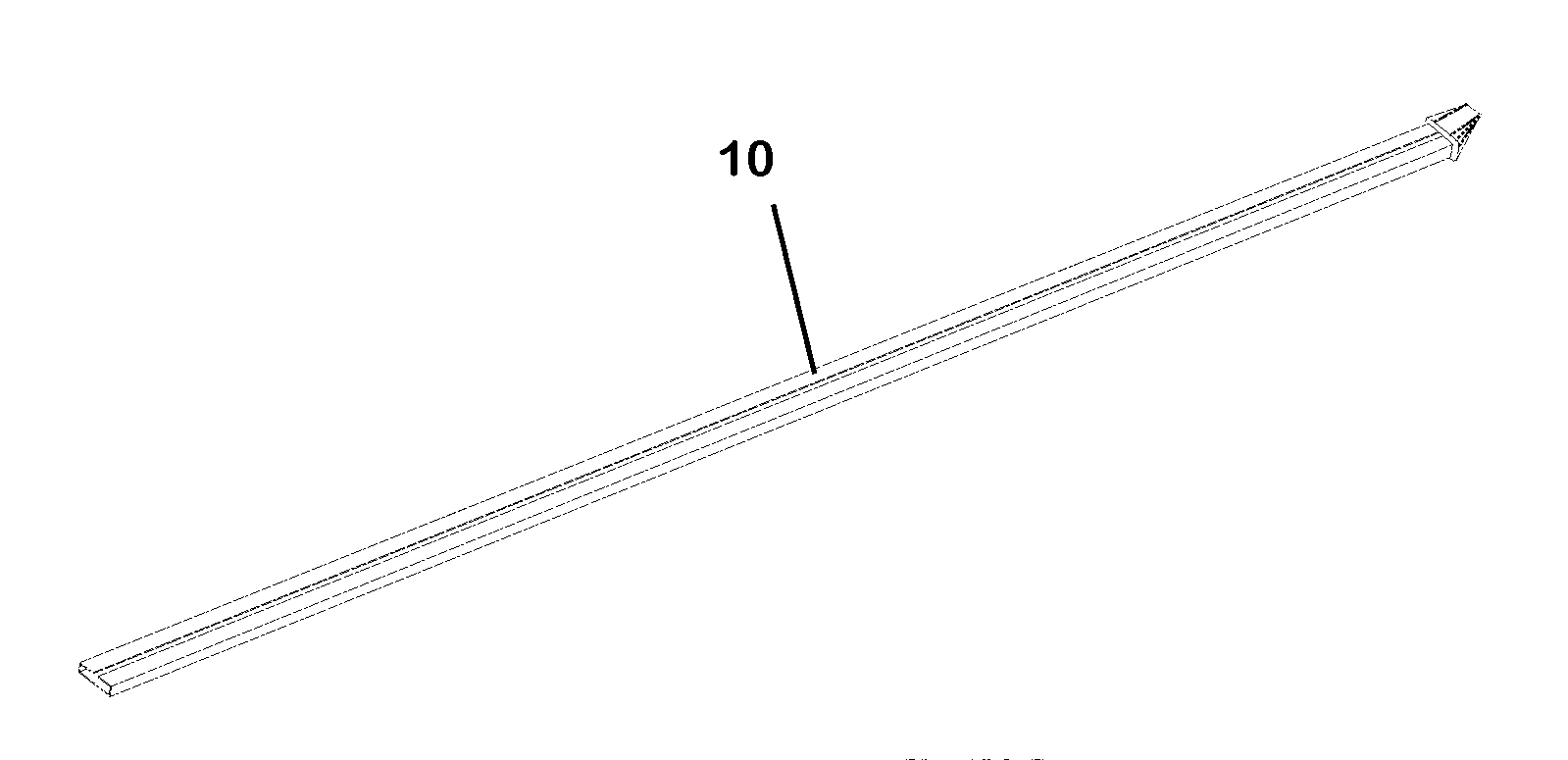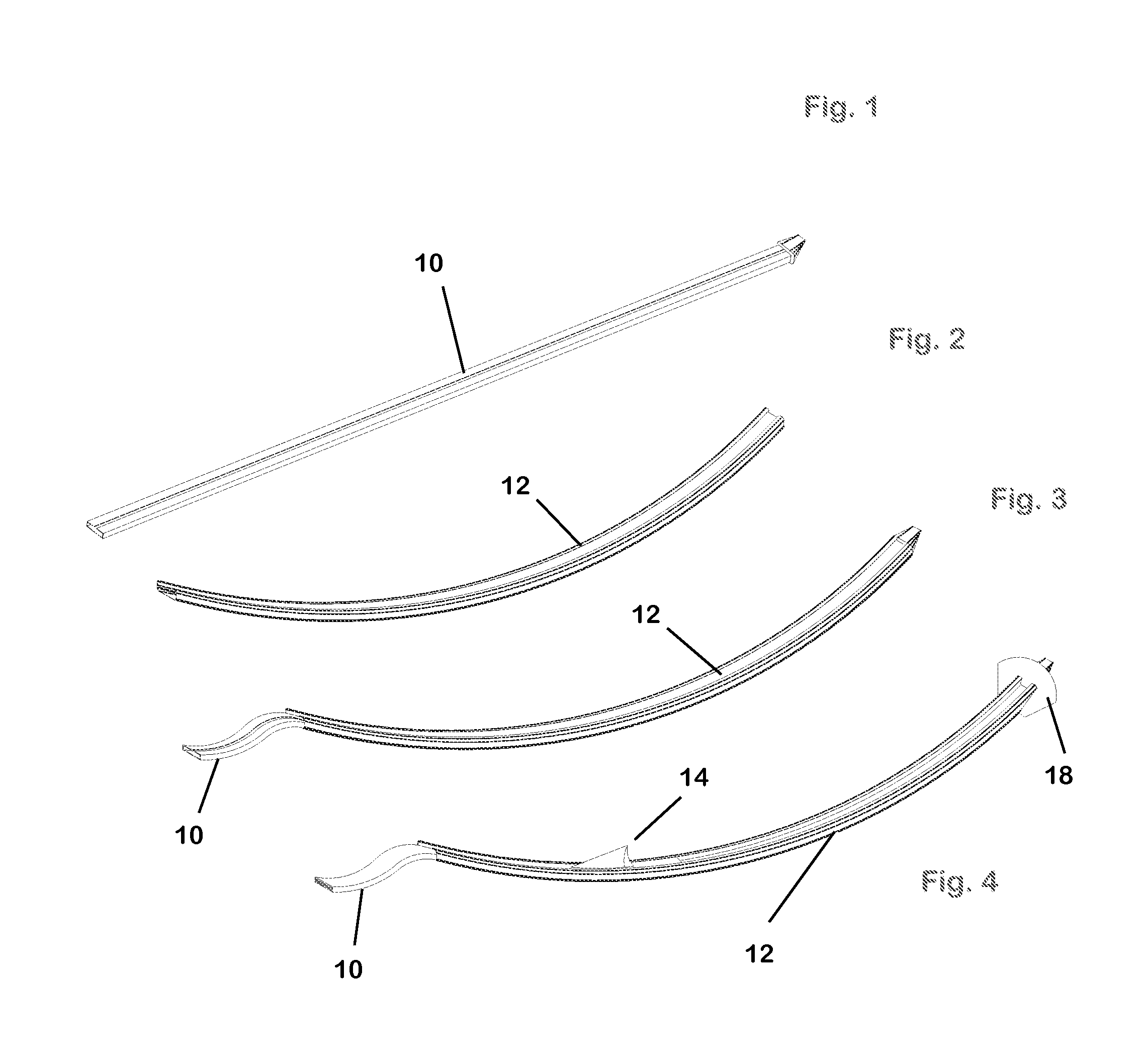Sling Blade Transection of the Transverse Carpal Ligament
a transverse carpal ligament and sling blade technology, applied in the field of surgery, can solve the problems of not being able to meet, not being able to pass all the equipment needed to perform the release surgery, and shortening the convalescent period, so as to achieve the effect of smallest cross-sectional area
- Summary
- Abstract
- Description
- Claims
- Application Information
AI Technical Summary
Benefits of technology
Problems solved by technology
Method used
Image
Examples
Embodiment Construction
[0041]FIGS. 1-4 shows the components of a pass through tool. FIG. 1 illustrates a flexible knife guide tape 10 or spatula design. FIG. 2 shows an arcuate rigid insertion guide 12 for the flexible knife guide tape, and FIG. 3 shows the guide loaded with the tape. FIG. 4 shows the guide with a push tape knife 14 inserted.
[0042]FIG. 5a shows the pass through tool 10 in its initial configuration. The removable tip 16 enables the surgeon to push the tool through an incision in the skin on one side of the carpal ligament, and underneath the ligament, and anchor it at the distal end. The curvature of the pass through tool causes it to surface on the hand side of the ligament, whereafter the tip may be removed as shown in FIG. 5b. Then a push tape with a cutting knife 14 attached is pushed back through the tool. The free end of the tape is grasped and the knife is pulled just into the guide, FIG. 5c. Now the distal end of the guide is secured, if desired, to an anchor 18 (FIGS. 5d,e) such a...
PUM
 Login to View More
Login to View More Abstract
Description
Claims
Application Information
 Login to View More
Login to View More - R&D
- Intellectual Property
- Life Sciences
- Materials
- Tech Scout
- Unparalleled Data Quality
- Higher Quality Content
- 60% Fewer Hallucinations
Browse by: Latest US Patents, China's latest patents, Technical Efficacy Thesaurus, Application Domain, Technology Topic, Popular Technical Reports.
© 2025 PatSnap. All rights reserved.Legal|Privacy policy|Modern Slavery Act Transparency Statement|Sitemap|About US| Contact US: help@patsnap.com



